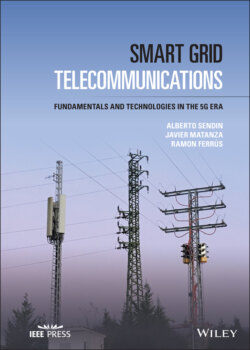Читать книгу Smart Grid Telecommunications - Ramon Ferrús - Страница 48
1.6.9 Telecommunications Special Solution for Utilities
ОглавлениеThe deployment of Smart Grids involves a transformation of the electric grid infrastructure, specifically Distribution grid infrastructure. This infrastructure is closely connected to the grid. The fact that the electric infrastructure has many aspects in common with the infrastructure aspects of telecommunication networks opens the door for synergies. In particular, there are several elements that are available for utilities, and in some cases, exclusive to them, that are used to deploy telecommunications infrastructures for the Smart Grid:
Rights of way. Rights of way have been necessary to deploy substations and power lines and their associated sites, towers, poles, and ducts. These infrastructure elements can host other cables (not only power lines) for telecommunication purposes. In fact, there is an abundance of examples of this carriers' carrier business model that has been used for the expansion of existing telecommunication networks [64]. Legislative bodies around the world have also granted the use of these existing rights of way to TSPs.
Optical fiber cables, unique to utilities. To take advantage of towers, ducts, and cables where optical fiber can be deployed in close proximity to HV power lines, special cables have been developed and are today of wide‐spread use (see Chapter 2). HV and LV solutions exist to carry optical fiber close to or inside power cables as well.
Towers and poles are used and can host radio base station to gain height and improve coverage within existing assets. This possibility minimizes costs and quickens deployments of radio (wireless) solutions.
Power Line Communications (PLC) are the way to support the transmission of telecommunication signals inside electric power cables. This technology is as diverse and versatile as radio (wireless) and has helped utilities through all ages to communicate distant points among them, for voice communication purposes, low (64 kbps) and high (200 Mbps) data rate needs.
Surface waves working around all sorts of overhead electricity cables, both naked or jacketed [65]. An application example of this technology is being developed and promoted by [66] and its future is uncertain.
